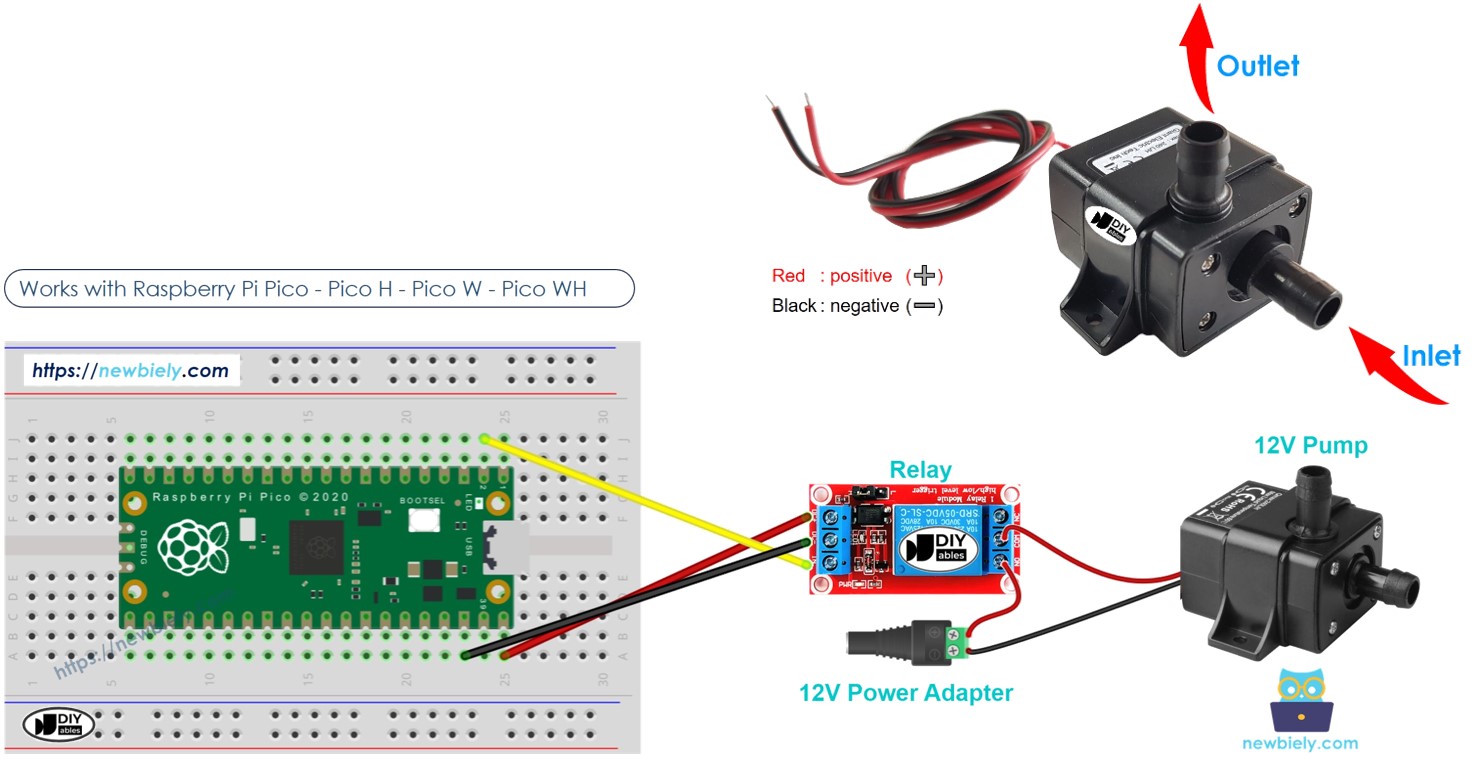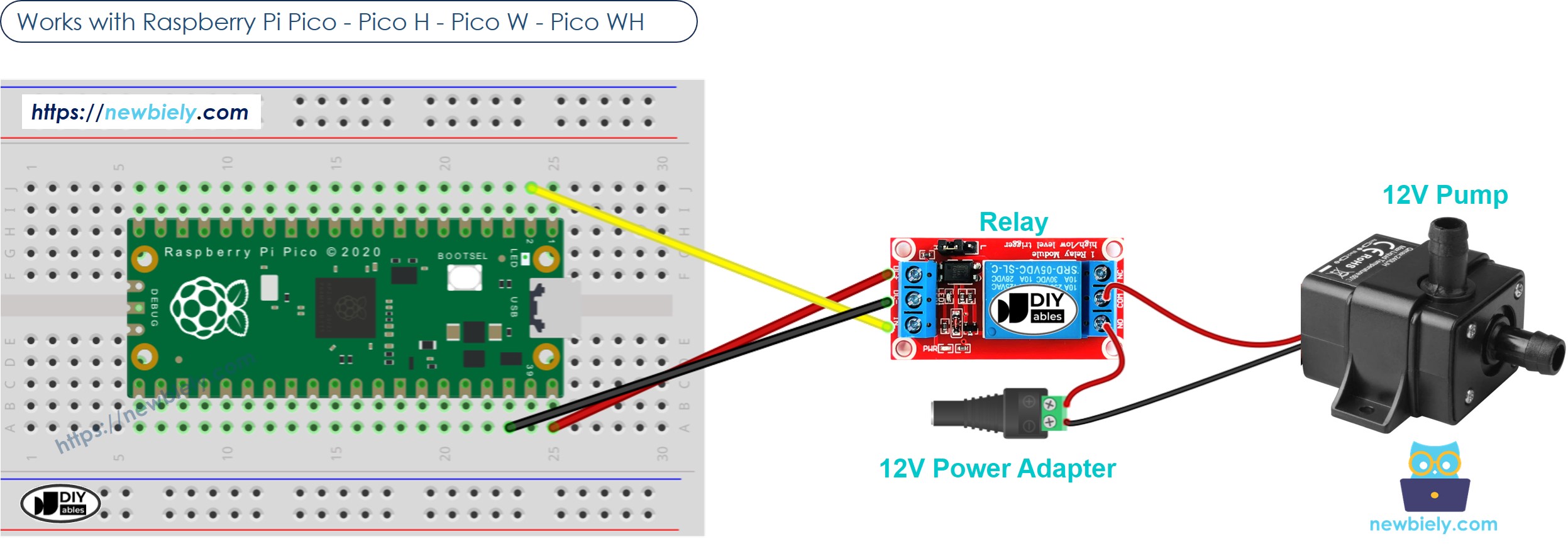Raspberry Pi Pico - Control Pump
In this guide, you will learn how to connect a 12V pump to a Raspberry Pi Pico and how to program the Raspberry Pi Pico to control the pump. This tutorial will help you create systems for watering plants, aquariums, or water refill stations.

Hardware Preparation
Or you can buy the following kits:
| 1 | × | DIYables Sensor Kit (30 sensors/displays) | |
| 1 | × | DIYables Sensor Kit (18 sensors/displays) |
Additionally, some of these links are for products from our own brand, DIYables .
Overview of 12V Pump
Pinout

A 12V pump usually has two pins.
- Attach the negative (-) pin (black) to the GND on the DC power supply.
- Attach the positive (+) pin (red) to the 12V on the DC power supply.
How to Control Pump
A 12V power supply is suitable for a 12V pump. To control the pump with a Raspberry Pi Pico, use a relay between them. The Raspberry Pi Pico controls the pump via the relay. If you don't know how relays work (including their pinout, operation, and how to program them), you should learn about them in the Raspberry Pi Pico - Relay tutorial.
Wiring Diagram

This image is created using Fritzing. Click to enlarge image
Raspberry Pi Pico Code
The code below turns the pump ON for five seconds and OFF for five cycles.
Detailed Instructions
Please follow these instructions step by step:
- Ensure that Thonny IDE is installed on your computer.
- Ensure that MicroPython firmware is installed on your Raspberry Pi Pico.
- If this is your first time using a Raspberry Pico, refer to the Raspberry Pi Pico - Getting Started tutorial for detailed instructions.
- Connect the Raspberry Pi Pico to the 12V pump according to the provided diagram.
- Connect the Raspberry Pi Pico to your computer using a USB cable.
- Launch the Thonny IDE on your computer.
- On Thonny IDE, select MicroPython (Raspberry Pi Pico) Interpreter by navigating to Tools Options.
- In the Interpreter tab, select MicroPython (Raspberry Pi Pico) from the drop-down menu.
- Ensure the correct port is selected. Thonny IDE should automatically detect the port, but you may need to select it manually (e.g., COM3 on Windows or /dev/ttyACM0 on Linux).
- Copy the above code and paste it to the Thonny IDE's editor.
- Save the script to your Raspberry Pi Pico by:
- Click the Save button, or use Ctrl+S keys.
- In the save dialog, you will see two sections: This computer and Raspberry Pi Pico. Select Raspberry Pi Pico
- Save the file as main.py
- Click the green Run button (or press F5) to run the script. The script will execute.
- Verify that the pump is working correctly.
If you name your script main.py and save it to the root directory of the Raspberry Pi Pico, it will automatically run each time the Pico is powered on or reset. This is useful for standalone applications that need to start running immediately upon power-up. If you name your script another name other than main.py, you will need to manually run it from Thonnys's Shell.
Code Explanation
The comments in the Raspberry Pi Pico code above explain everything.
Video Tutorial
Challenge Yourself
- Make a self-watering system using Raspberry Pi Pico, a soil moisture sensor, and a pump.
- Set up a self-refilling water system with Raspberry Pi Pico, a water level sensor, and a pump.
